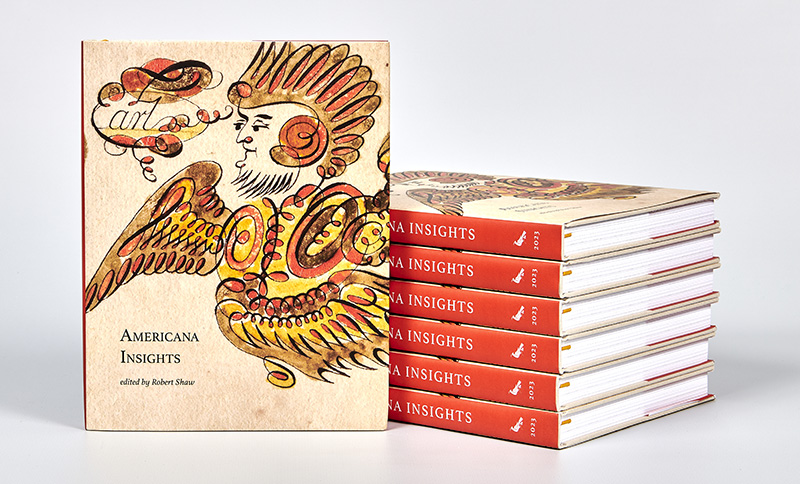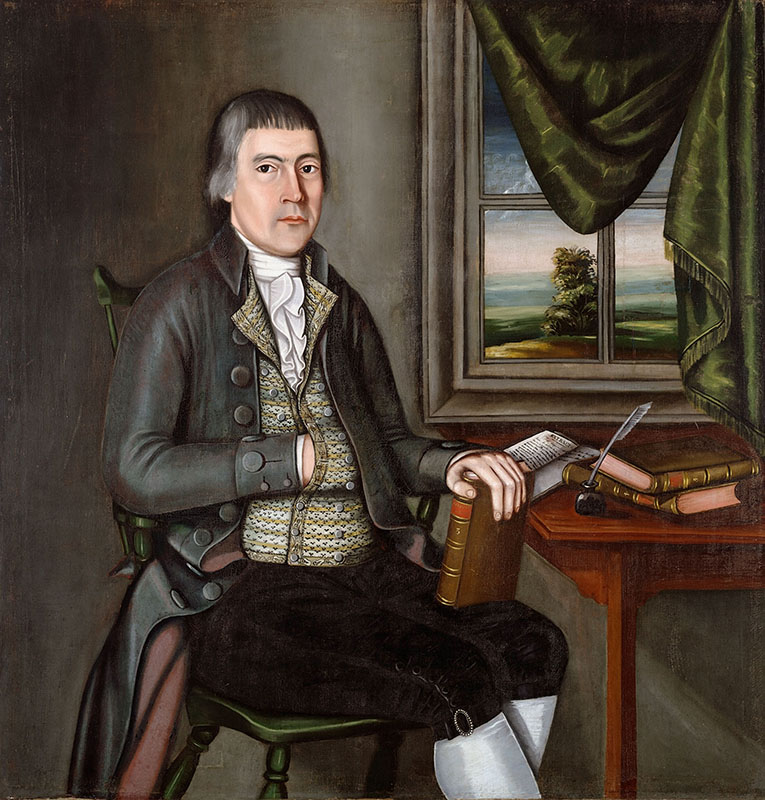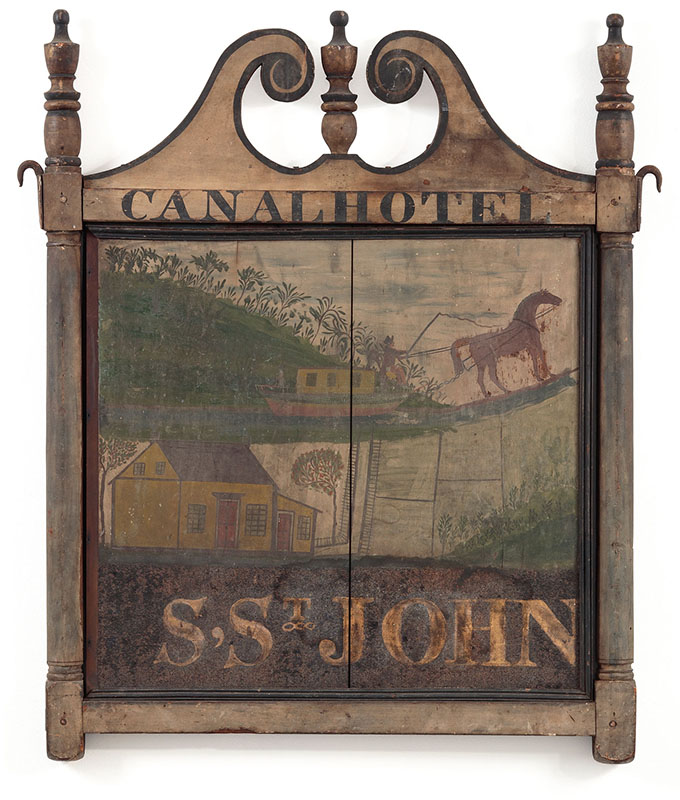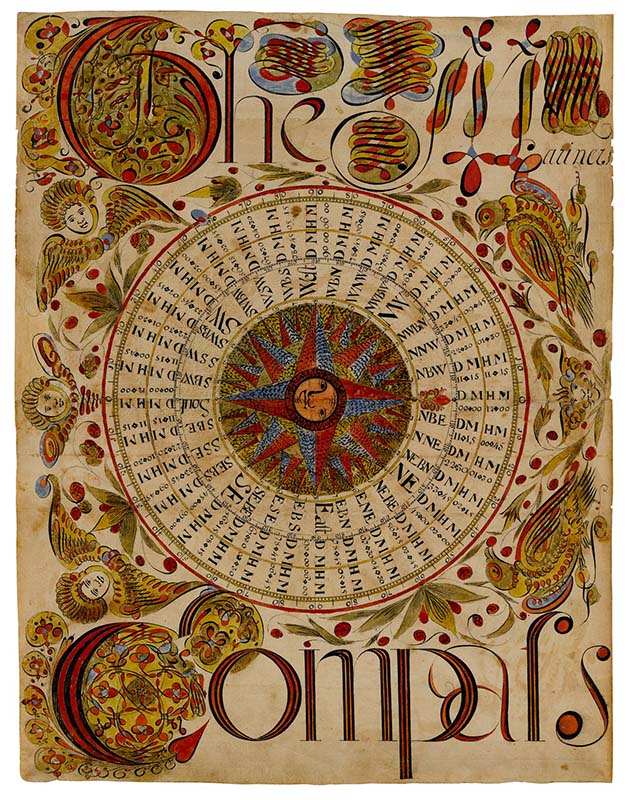𝘈𝘔𝘌𝘙𝘐𝘊𝘈𝘕𝘈 𝘐𝘕𝘚𝘐𝘎𝘏𝘛𝘚 2023: Highlighting the Enduring Value of Print
by Trevor Brandt
Collectors, curators, and scholars of material culture intuitively grasp the importance of hands-on interactions with objects. Such tactile experiences yield a deeper understanding of how an object was made and used—an intimate knowledge that can never be replicated with an image alone. Americana Insights has similarly recognized the enduring value of a physical publication in an era of digital saturation. First envisioned in 2019 as a virtual platform for advancing the study of traditional Americana and folk art, Americana Insights has since realized that digital publications cannot replace the ease of paging through a book or annotating it with pen and ink. Equally irreplaceable is the joy of seeing a handsome volume on your library shelf.
Answering this call, Americana Insights 2023 is the inaugural printed volume in an annual series dedicated to publishing new research on traditional Americana and folk art (figure 1). This publication, distributed by the University of Pennsylvania Press, takes readers on a journey through American material culture from the colonial period through the early 1900s and encompassing New England, the Mid-Atlantic, Midwest, and South. Perhaps most notable is the diversity of media within the volume—including portraiture, furniture, tavern signs, jewelry, hooked rugs, works on paper, and more.
Highlights include Mark D. Mitchell’s groundbreaking reexamination of folk portraiture by the Beardsley Limner, an unidentified New England artist active around 1775–1800. Mitchell, who is the Holcombe T. Green Curator of American Paintings and Sculpture at the Yale University Art Gallery, revisits the portraits of Dr. Hezekiah Beardsley (1748–1790) and his wife Elizabeth Davis Beardsley (1749–1790) to argue convincingly for a narrower attribution of works to the Beardsley Limner (figures 2 and 3).
Figure 2. The Beardsley Limner, 𝘋𝘳. 𝘏𝘦𝘻𝘦𝘬𝘪𝘢𝘩 𝘉𝘦𝘢𝘳𝘥𝘴𝘭𝘦𝘺, c. 1789, New Haven, Connecticut. Oil on canvas. Yale University Art Gallery, Gift of Gwendolen Jones Giddings, 1952.46.1.
Multiple essays within the volume focus on three-dimensional objects. Richard Miller, researcher at the Chipstone Foundation, examines a series of Fancy dressing tables with stenciled and faux grain decoration that were made in Sullivan County, New Hampshire (figure 4). Miller traces a revival in the form after 1800, underscoring the role of cabinetmakers and ornamental painters in reinterpreting the traditional form and decoration. Brian and Pamela Ehrlich focus in their essay on a double-sided tavern sign made for the Canal Hotel in Port Jervis, New York, about 1826 (figure 5). The authors consider both the wider tradition of painted tavern signs at the time and this particular example’s significance for understanding New York’s early industrial development in the early 1800s.
Figure 4. Attributed to the Willard Harris shop, painted by David Harris, Dressing table, c. 1828-30, Newport, New Hampshire. Painted white pine and maple. New Hampshire Historical Society, Gift of Margaret H. Jewell, 1933.005.01.
The most extended analysis within the volume is historian Deborah M. Child’s three-part essay on New Jersey schoolmaster and calligrapher Thomas Earl. While previous scholars believed Earl was born in Rhode Island in 1704, Child uses surviving documentation and objects to prove that Earl was, in fact, born in England in 1711 and immigrated to America as an indentured servant in 1731. In addition to establishing a correct biography of this talented artist, Child explores a phenomenally colorful array of illuminated pages within Earl’s two surviving copybooks as well as the various print sources and calligraphy manuals referenced by Earl (figure 6).
Essays in future volumes will consider topics as diverse as Cherokee river-cane basketry, the New England portraitist Sturtevant J. Hamblin, Pennsylvania German fraktur, and displays of American folk art on ocean liners in the early 1900s. The depth and diversity of the topics covered in Americana Insights 2023 and planned future volumes attest to the enduring value of new scholarship as well as the printed word in a digital age.
Trevor Brandt is the Managing Editor at Americana Insights.
About The Decorative Arts Trust Bulletin
Formerly known as the "blog,” the Bulletin features new research and scholarship, travelogues, book reviews, and museum and gallery exhibitions. The Bulletin complements The Magazine of the Decorative Arts Trust, our biannual members publication.
Click Images to Enlarge
Did you know that clicking on the images in Bulletin posts will allow you to get a closer look? Simply click on an image, and a larger version will open in a pop-up window.













